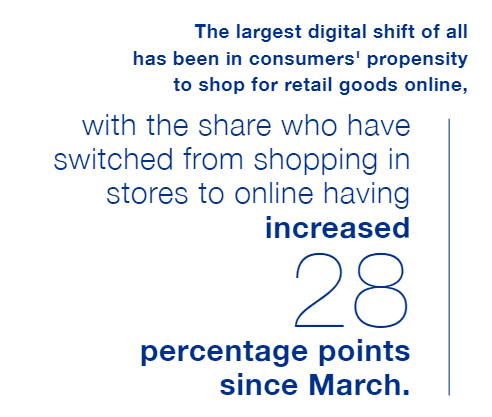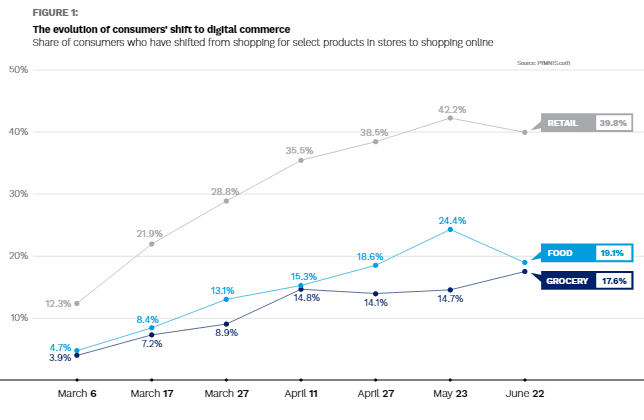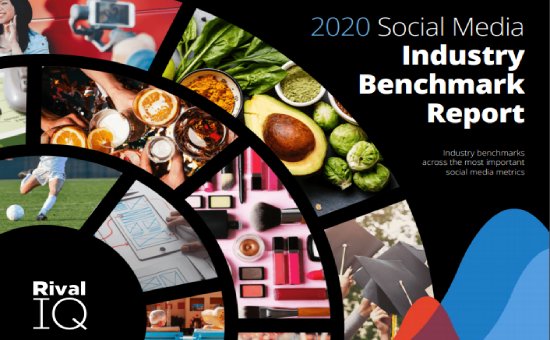How We Shop – Measuring the Rapid Digital Shift | PayPal
Consumer Behavior |
Everything has changed since COVID-19’s outbreak, a great deal has changed since then, consumers still buy groceries but an increasing number are doing so online.
It appears that as more consumers grow accustomed to shopping and ordering food online, the more likely they are to maintain their online behavior.
As reported, 24% of all consumers say they have shifted to performing at least one daily activity online and plan to keep it that way.
Let’s get through this report
The Rise of the Digital-First Consumer:
The study of measuring the rapid digital shift shows that being able to shop and pay digitally is a must for many consumers. 57% of consumers now say that the availability of digital payment options would impact their choices of where to shop.
- According to this study, consumers’ propensity to shop for retail goods online has been the biggest shift.
- Also, the share of consumers who plan to return to brick and mortar stores is continuing to drop as the share of those who plan to shop using digital-first channels continues to increase.
- According to the study, 19% of consumers have shifted from dining in restaurants to ordering food online since the pandemic began.
Moreover, 40% of consumers are shopping online more and shopping in stores less.

The chart below shows the share of consumers who have shifted from shopping for select products in stores to shopping online.

Who Gets the Consumer’s Business?
It is known that consumers seek shopping experiences that create certainty, that is no longer the brick-and-mortar experience for many. 37% of consumers are frustrated by the limited quantities of available items in large grocery stores.
Acoording to the digital shift study, 31% of consumers are frustrated by the limited quantities of available items in large retail stores.
The figure below shows the share of consumers who experience select challenges when shopping for retail items and groceries.

Make sure to check the full “Digital Shift” Report here.
The Table of Content of “How We Shop – Measuring the Rapid Digital Shift” Report:
- Introduction
- Part I: The rise of the digital-first consumer
- Part II: Why the digital shift?
- Part III: Who gets the consumer’s business?
- Conclusion
- Methodology
Number of Pages:
- 23 pages
Pricing:
- Free
Methodology:
PYMNTS issued its first study on consumers’ behavioral changes in the wake of the COVID-19 pan-demic on March 23, 2020. We have since surveyed more than 16,000 consumers to gain a first-hand, real-time account of how their routines have continued to change with the passage of time. Our latest research, done in collaboration with and supported by PayPal, examines survey data collected from 2,163 U.S. consumers to understand how many of their newfound shopping habits might persist, even after their local economies reopen.







